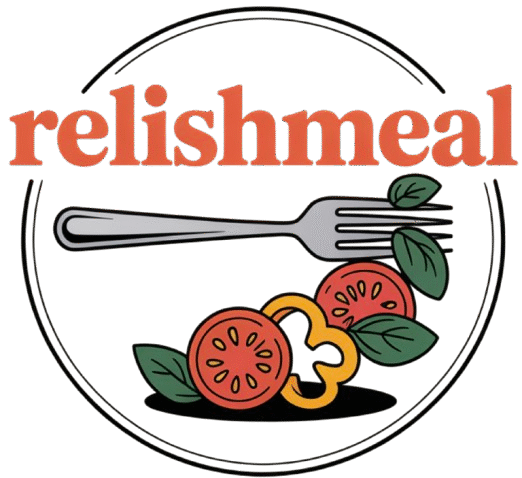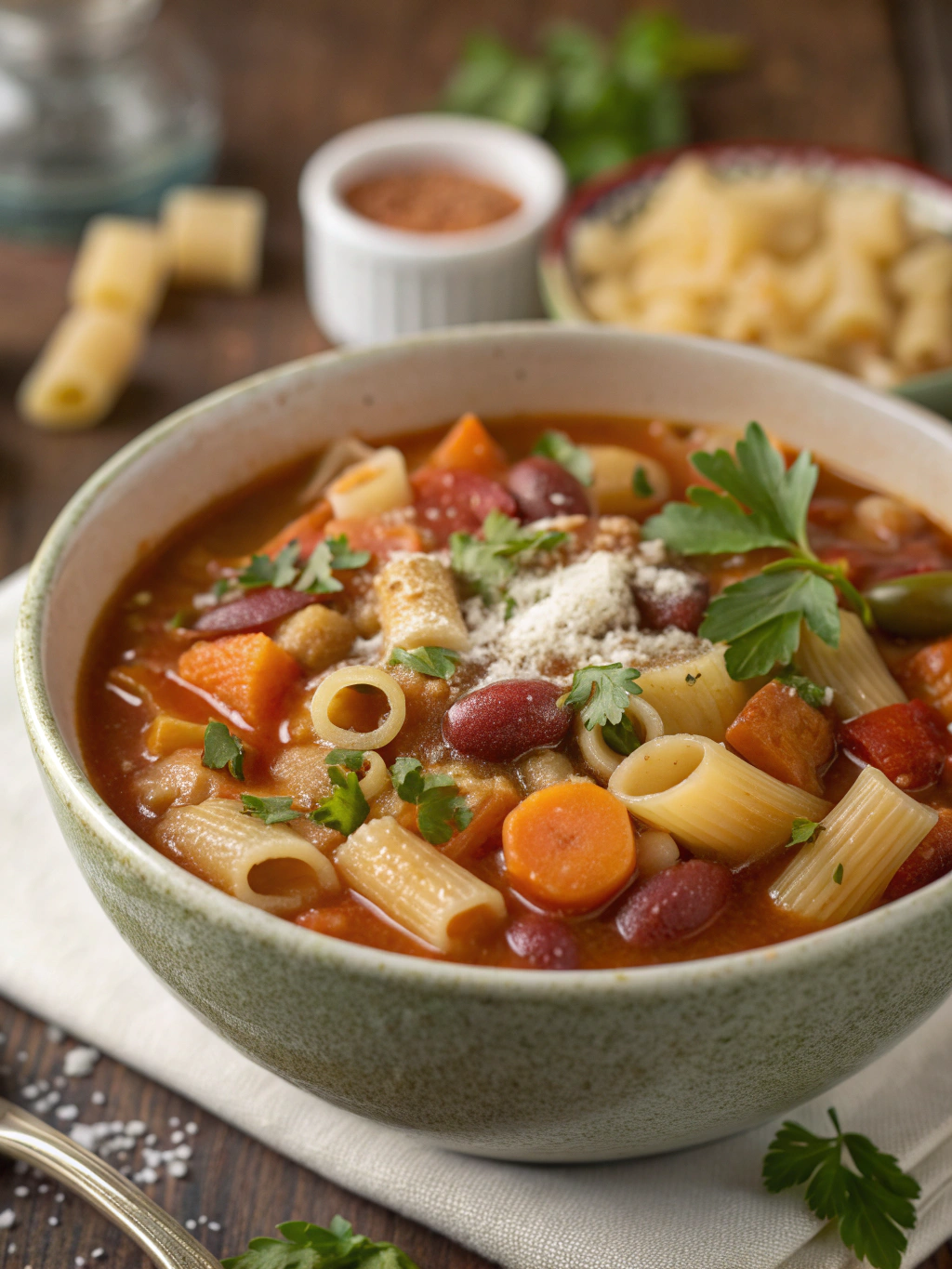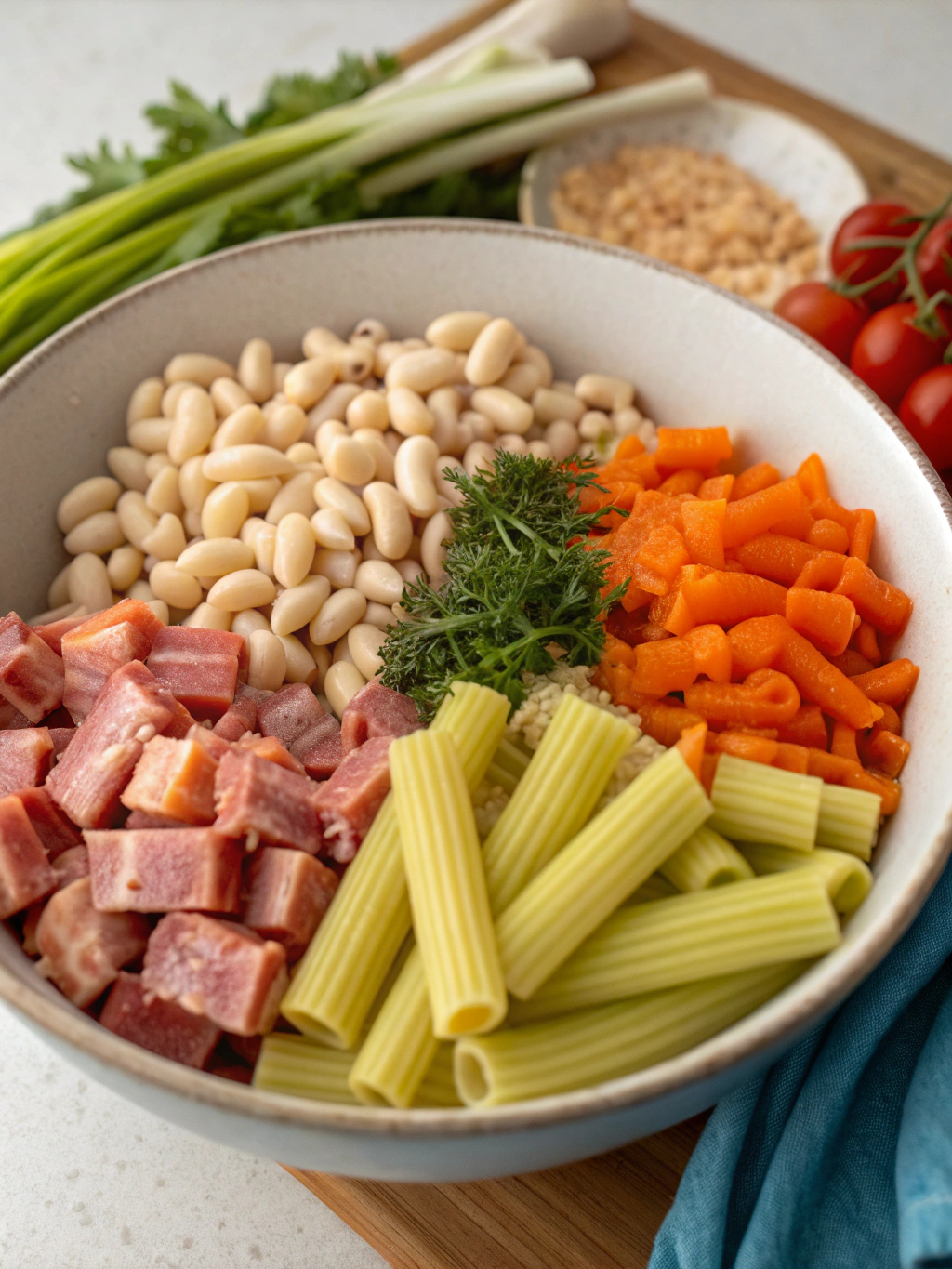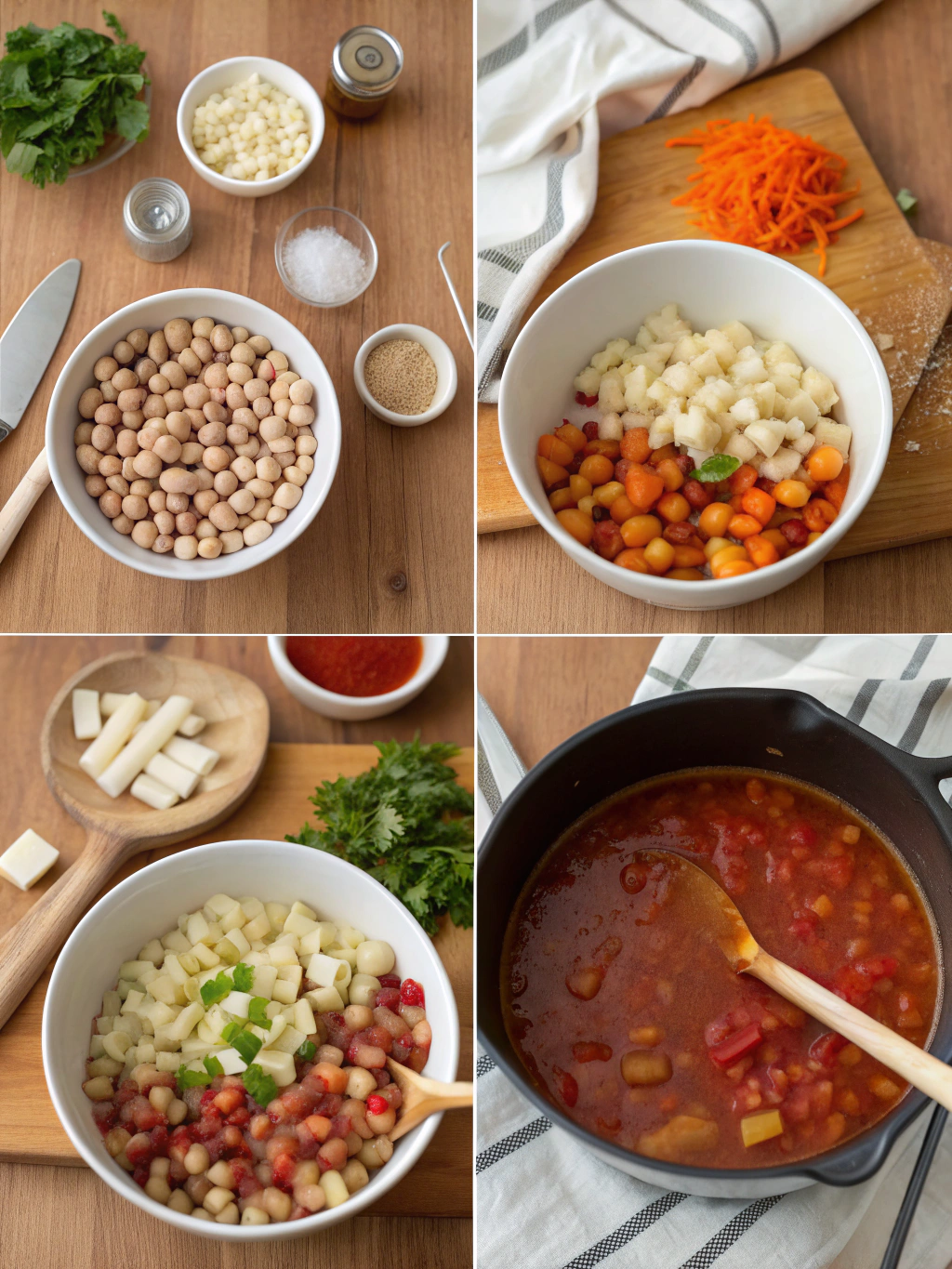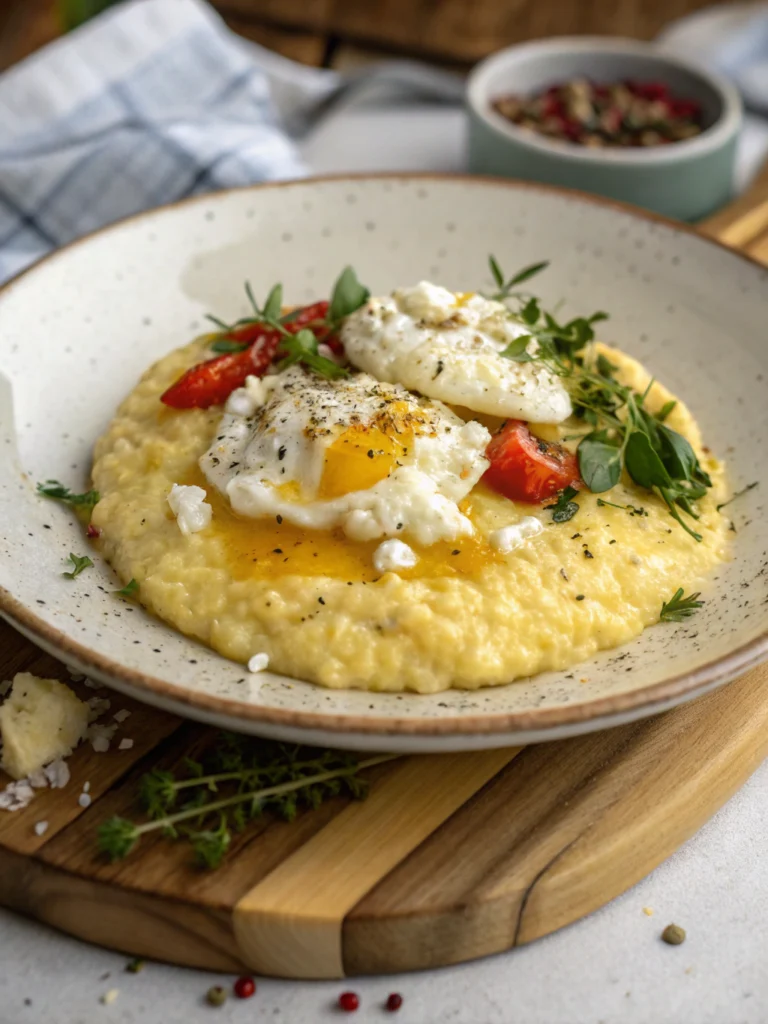Pasta e Fagioli: The Authentic Italian Comfort Soup You Need to Try
Have you ever wondered why Italian comfort food has such a magical ability to warm both body and soul? Among these treasured recipes, Pasta e Fagioli stands as a testament to how humble ingredients can transform into something extraordinary. This rustic Italian bean and pasta soup has conquered hearts worldwide with its hearty texture and rich flavors.
Dating back generations in Italian kitchens, Pasta e Fagioli (literally “pasta and beans”) represents the perfect marriage of simple ingredients creating complex flavors. Whether you’re seeking authentic Italian cuisine or trying to recreate the beloved pasta e fagioli soup olive garden version at home, this recipe delivers comfort in every spoonful.
Ingredients List
The beauty of this classic Italian dish lies in its simple yet flavorful ingredients. Each component contributes to the rich, comforting character that makes this soup so beloved.
- 2 tablespoons extra virgin olive oil
- 1 medium onion, finely diced
- 2 medium carrots, peeled and diced
- 2 celery stalks, diced
- 4 garlic cloves, minced
- 1 teaspoon dried oregano
- 1 teaspoon dried basil
- ½ teaspoon dried thyme
- ½ teaspoon red pepper flakes (optional, for heat)
- 2 tablespoons tomato paste
- 1 can (14.5 oz) diced tomatoes
- 2 cans (15 oz each) cannellini beans, drained and rinsed
- 6 cups vegetable or chicken broth
- 1 Parmesan cheese rind (optional, but adds incredible flavor)
- 8 oz ditalini pasta (or small elbow macaroni)
- Salt and freshly ground black pepper, to taste
- Fresh parsley, chopped for garnish
- Grated Parmesan cheese, for serving
Substitution options: No cannellini beans? Red kidney beans or borlotti beans work wonderfully. For a gluten-free version, substitute the pasta with gluten-free pasta or add extra beans. Vegetarians can use vegetable broth, while meat lovers might prefer chicken or beef broth for added richness.
Timing
Preparation Time: 15 minutes for chopping vegetables and measuring ingredients
Cooking Time: 45 minutes for developing those deep, comforting flavors
Total Time: 1 hour – significantly faster than traditional versions that might simmer for 2+ hours, yet delivering equally satisfying results. The beauty of this recipe is that it delivers authentic flavor in a weeknight-friendly timeframe.
Step-by-Step Instructions
Step 1: Create the Aromatic Base
Heat the olive oil in a large Dutch oven or heavy-bottomed pot over medium heat. Add the diced onion, carrots, and celery (the Italian “soffritto”). Cook for 5-7 minutes until vegetables begin to soften. Add the minced garlic, dried herbs, and red pepper flakes if using. Sauté for another 30 seconds until fragrant, being careful not to burn the garlic.
Step 2: Build the Flavor Foundation
Add the tomato paste and cook for 1-2 minutes, stirring constantly to slightly caramelize it – this develops a deeper flavor profile. Pour in the diced tomatoes with their juices, stirring to combine and scraping any browned bits from the bottom of the pot. These browned bits contain concentrated flavor that will enrich your soup.
Step 3: Add Beans and Broth
Add the drained and rinsed cannellini beans to the pot. Pour in the broth and add the Parmesan rind if using. Bring the mixture to a boil, then reduce heat to maintain a gentle simmer. Cover partially and cook for 15-20 minutes to allow the flavors to meld together. The longer it simmers, the more the flavors will develop.
Step 4: Prepare the Pasta
You have two options for cooking the pasta:
- Cook it directly in the soup: Add the pasta to the simmering soup and cook until al dente according to package directions, usually 8-10 minutes. Stir occasionally to prevent sticking.
- Cook separately: Boil the pasta in salted water until al dente, drain, and add to individual serving bowls with the soup ladled over. This prevents the pasta from absorbing too much liquid if you plan to have leftovers.
Step 5: Final Adjustments
Remove the Parmesan rind if used. Taste and adjust seasoning with salt and pepper as needed. For a creamier texture, mash some of the beans against the side of the pot with a wooden spoon. If the soup is too thick, add a little more broth to reach your desired consistency. Remember that Pasta e Fagioli should be thick and hearty, somewhere between a soup and a stew.
Step 6: Serve and Garnish
Ladle the hot Pasta e Fagioli into bowls. Garnish generously with freshly chopped parsley and grated Parmesan cheese. A drizzle of high-quality extra virgin olive oil adds a beautiful finishing touch that elevates the entire dish. Serve with crusty Italian bread for the complete experience.
Nutritional Information
This hearty soup offers an excellent balance of nutrients, making it a wholesome meal option. Per serving (approximately 1½ cups):
Calories: 320
Protein: 15g
Carbohydrates: 52g
Fiber: 9g
Fat: 7g (mostly healthy unsaturated fats from olive oil)
Sodium: 680mg (varies based on broth used)
Calcium: 120mg
Iron: 4mg
The combination of pasta and beans creates a complete protein profile, making this soup particularly valuable for vegetarian diets. The high fiber content (meeting approximately 32% of daily recommendations) promotes digestive health and sustained energy release.
Healthier Alternatives for the Recipe
While traditional Pasta e Fagioli is already nutritious, here are some modifications to enhance its health benefits:
• Swap regular pasta for whole grain pasta to increase fiber content and lower the glycemic index.
• Replace half the pasta with additional vegetables like zucchini, spinach, or kale for extra nutrients and reduced carbohydrates.
• Use sodium-reduced broth and limit added salt, compensating with herbs and spices for flavor.
• For a higher protein version, add lean ground turkey or chicken (browned before adding the vegetables).
• Incorporate a tablespoon of nutritional yeast instead of Parmesan for a dairy-free option with B-vitamins.
Serving Suggestions
Elevate your Pasta e Fagioli experience with these complementary pairings:
• Serve with a simple arugula salad dressed with lemon juice and olive oil to cut through the richness of the soup.
• Accompany with garlic-rubbed toasted ciabatta or whole grain bread for dipping.
• For a complete Italian dinner, serve smaller portions as a primo piatto (first course) followed by a light protein main.
• In summer, serve slightly cooler with a chilled glass of Pinot Grigio or Sangiovese for an al fresco dining experience.
• For a rustic presentation, serve in bread bowls made from hollowed-out sourdough rounds.
Common Mistakes to Avoid
- Overcooking the pasta: This is perhaps the most common error. Pasta should remain al dente, as it will continue absorbing liquid and become mushy if overcooked.
- Using too much liquid: Authentic Pasta e Fagioli has a thick consistency. Start with less broth than you think you need – you can always add more.
- Skipping the Parmesan rind: This “secret ingredient” adds remarkable depth of flavor. Save your rinds in the freezer specifically for soups like this.
- Rushing the soffritto: The slow sautéing of onions, carrots, and celery creates the foundational flavor. Give it time to develop properly.
- Not seasoning in layers: Add salt at different stages of cooking rather than all at the end for more balanced flavor development.
Storing Tips for the Recipe
Pasta e Fagioli actually improves with time as flavors meld together, making it perfect for meal prep. If storing with pasta mixed in, be aware the pasta will continue absorbing liquid and soften.
For best results when planning leftovers, store the pasta and soup separately. Refrigerate the soup base in airtight containers for up to 4 days, adding freshly cooked pasta when reheating.
This soup freezes beautifully without the pasta. Store in freezer-safe containers for up to 3 months. Thaw overnight in the refrigerator and reheat gently on the stovetop, adding fresh pasta during reheating.
When reheating, you may need to add a splash of broth or water as the soup tends to thicken considerably when chilled. Refresh with a sprinkle of fresh herbs before serving.
Conclusion
Pasta e Fagioli represents the heart of Italian cooking – transforming simple, accessible ingredients into something truly special. This centuries-old recipe has endured for good reason; it nourishes both body and spirit with its hearty texture and rich flavor profile.
Have you tried making this classic Italian comfort food at home? I’d love to hear about your experience! Share your Pasta e Fagioli stories in the comments below, or tag us in your creations on social media. And if you enjoyed this recipe, be sure to check out our other authentic Italian dishes that bring the warmth of Italian kitchens to your home.
